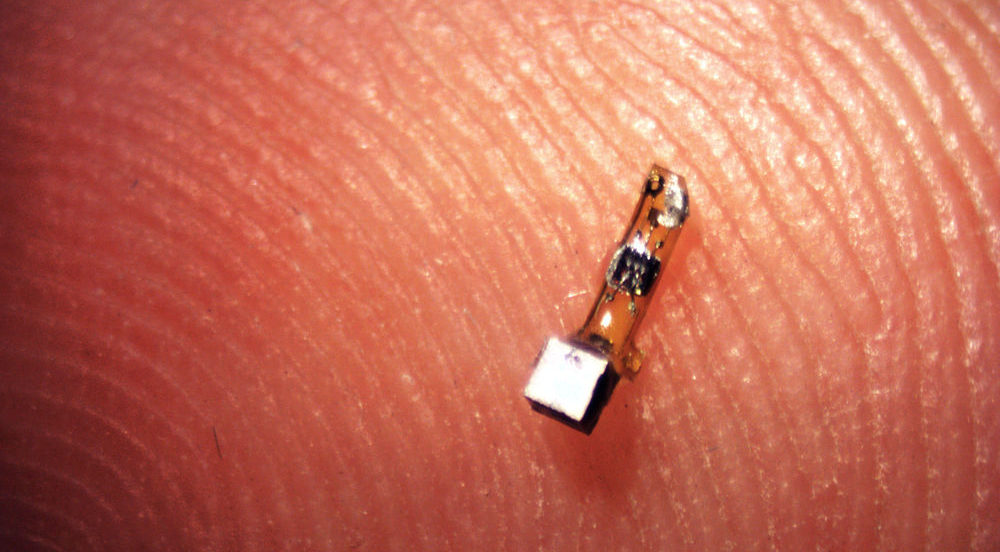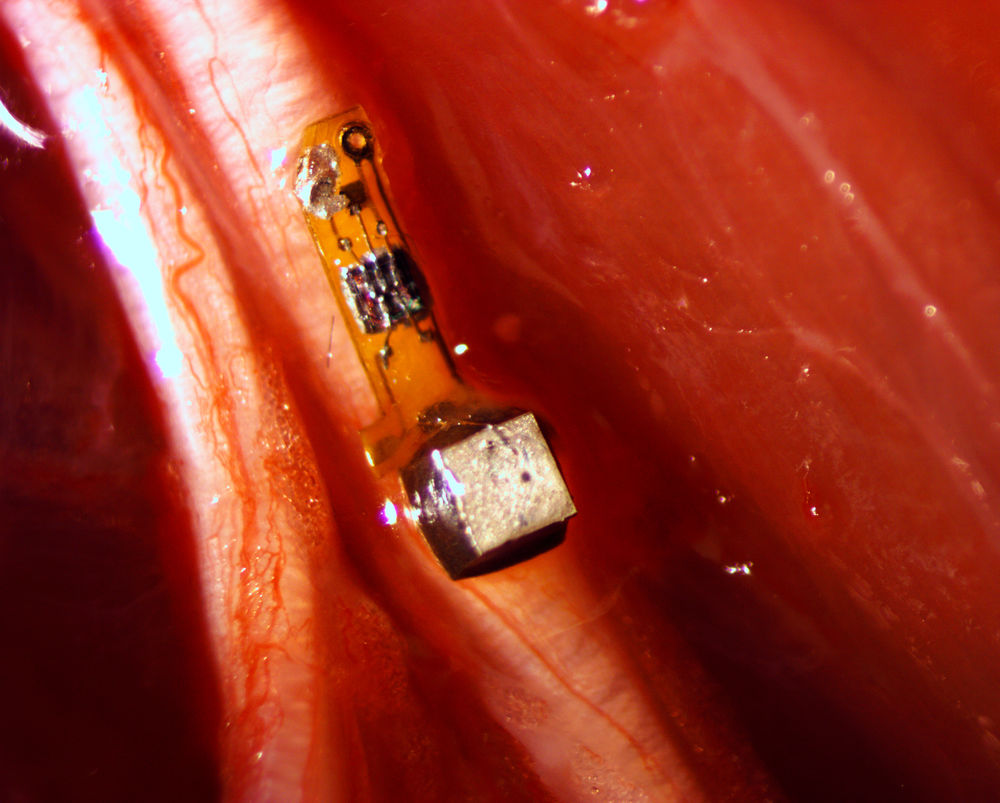Medical device and MedTech insights, news, tips and more
Wireless ‘Neural Dust’ Could Monitor Your Brain
August 18, 2016

Science fiction that features wires connecting brains to computers might now be obsolete.
Wireless powered implants, each smaller than a grain of rice, could serve as “neural dust” that can one day scan and stimulate brain cells. Such research could one day help lead to next-generation brain-machine interfaces for controlling prosthetics, exoskeletons and robots, as well as “electroceuticals” to treat disorders of the brain and body.
The new prototypes, made by scientists at the University of California at Berkeley, are each roughly 3 millimeters long, 1 millimeter high and 4/5 of a millimeter thick. Each neural dust mote possesses a piezoelectric crystal that can convert mechanical power from ultrasonic pulses broadcast from outside the body into electrical power. The energy from these 60 ultrasonic pulses broadcast each second drives sensors and other electronics on the motes.
The piezoelectric crystals reflect some of the incoming ultrasonic pulses. Electronics in the neural dust motes can alter the pulses that get scattered outward, and so can wirelessly transmit data they gathered. In experiments with rats, the researchers found that neural dust motes implanted in nerve and muscle fibers in the leg could record and transmit electrical data.
“I was really skeptical of this concept at first, since it was so out of the box,” says Doug Weber, a bioengineer and neuroscientist at DARPA, who helped fund the neural dust research. “But it’s a really elegant approach, and it works pretty well.”
The researchers wanted to create wireless implants to avoid irritating the body. Conventional electronic implants that connect to nerves rely heavily on wires that can inflame tissues over time.
“The approach they’re taking is ingenious,” says neuroengineer Jacob Robinson at Rice University, who did not take part in this research. “They’ve addressed one of the most important challenges out there when it comes to neural interfaces.”

The scientists had previously explored using radio waves to power and communicate with neural dust motes. However, radio waves are not good at reaching deep within the body, while decades of ultrasonic imaging has revealed that ultrasonic pulses are very good at penetrating soft tissues, says researcher Michel Maharbiz, an electrical engineer at the University of California at Berkeley.
“This is a breakthrough technology that really changes what’s possible in terms of sensing and stimulating nerve activity, especially nerves deep inside the body,” Weber says.
Read Full Article – Source: Wireless ‘Neural Dust’ Could Monitor Your Brain | Popular Science
Author: Charles Q. Choi
Photo Credit – Ryan Neely / UC Berkeley

